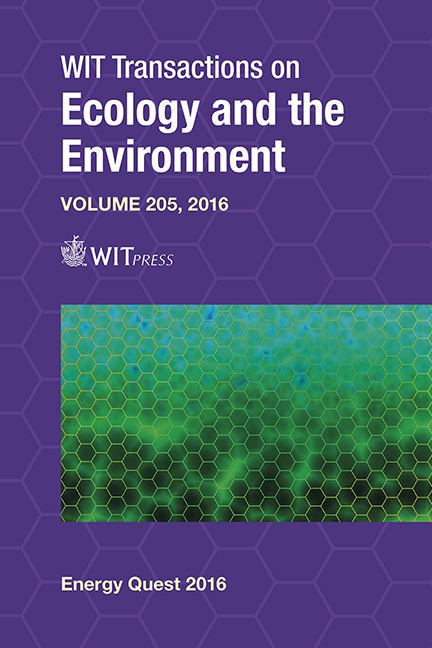Pyrolysis: An Alternative Technology For Sustainable Energy From Sewage Sludge
Price
Free (open access)
Transaction
Volume
205
Pages
11
Page Range
245 - 255
Published
2016
Size
1,215 kb
Paper DOI
10.2495/EQ160231
Copyright
WIT Press
Author(s)
G. E. G. Vieira, A. P. de Castilho, J. Dweck, L. F. Teixeira
Abstract
Sewage sludge production tends to grow due to the increased amount of treated sewage. Additionally, the limitations of the disposal lead to the need for alternative processes for technological use of this residue and pyrolysis is a promising way to obtain products with potential energy, such as bio-oil. In this work, the characterization of wastewater and the application of catalytic pyrolysis sludge had the addition of Fe2O3 as a catalyst, in order to optimize the bio-oil production. The sewage sludge characterization presented five values: moisture content 6.85% (m/m), ash 33.33% (m/m), volatile solids 54.99% (m/m), fixed carbon 4.83% (m/m) and calorific value 21.80 MJ.kg−1. The thermal behavior of the sewage sludge was analyzed by thermogravimetric analysis (TGA), to check the catalytic activity of iron oxide with increasing volatilization and cracking of the organic substances present in sewage sludge, and thus reducing the formation of solid fraction. In the pyrolysis process an experimental planning of 23 with a central point has been used, and the effect of variables was analyzed at different process temperatures (450°C, 500°C and 550°C), time (120 min, 150 min and 180 min), heating rates (10°C.min−1, 20°C.min−1, and 30°C.min−1) in the yield of obtained products. Statistical analysis showed that the temperature influenced the yields of bio-oil in a positive and significant way, the maximum yield was in the order of 15.60% (m/m) under the following conditions: temperature 550°C, time 180 min and 10°C.min−1 heating rate. Moreover, the bio-oil obtained from sewage sludge by pyrolysis can be used in the chemical industry and in power generation.
Keywords
sewage, sludge, pyrolysis, analysis, thermogravimetric, biomass





